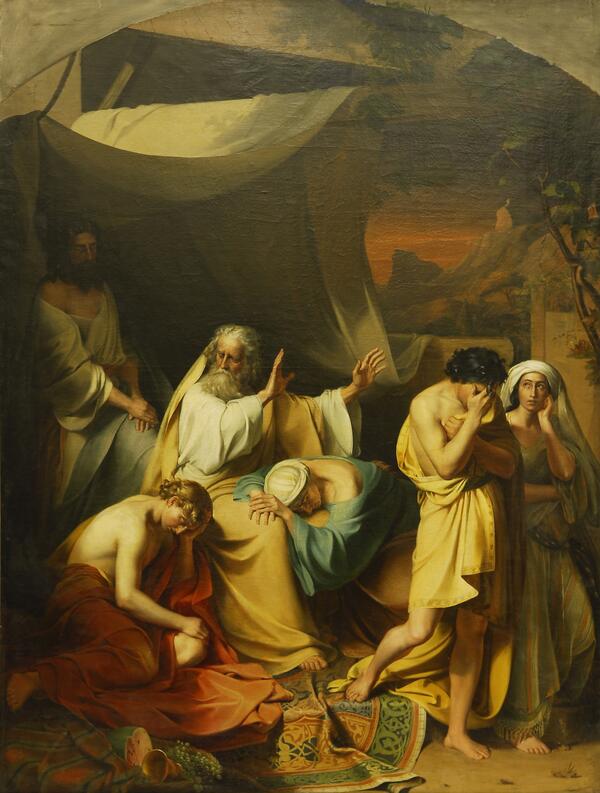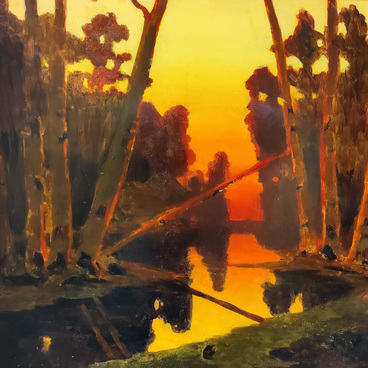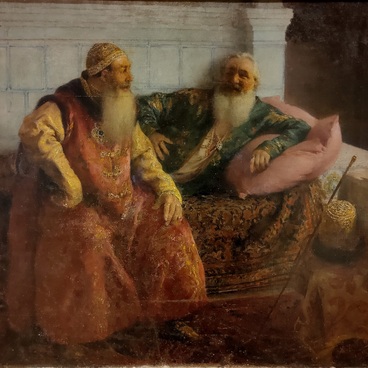Ivan Ksenofontov painted the canvas ‘Noah cursing Ham’, in 1850. He portrayed a story in the Bible, which talks about the events after the Great Flood. Legend has it that when Noah’s ark was at Mt. Ararat, Noah planted grapes and drank wine. The undressed old man in his tent fell asleep intoxicated. The young son laughed at his father. In the ninth chapter of the book of Genesis, it says: “And Ham, the father of Canaan, saw the nakedness of his father, and told his two brethren without. And Shem and Japheth took a garment, and laid it upon both their shoulders, and went backward, and covered the nakedness of their father.” Later, when Noah woke up, he blessed the two elder brothers, and Noah told Ham that he curses his son Canaan.
The artist portrayed the scene of Ham’s exile from the family. In the foreground he placed five figures in loose robes. Noah turns away from his young son and raises his hands as if pushing him away from himself. The young man walks down the steps, lowers his head and sorrowfully covers his face with his palm. Shem and Japheth fell to the knees of the elder. Next to Ham is a woman — she rolls her eyes up into the sky.
Ivan Ksenofontov painted this canvas in a traditionally academic fashion, which falls under the historical genre. In the Imperial Academy of Arts, the history genre was considered the most important: it was called ‘high’, unlike still lifes and landscapes. Historical genre paintings did not only include themes about real events, but mythological, biblical and evangelical themes as well.
Ivan Ksenofontov completed the painting while fulfilling all the requirements of the Academy. He illustrated the figures of people according to their antique models — all the heroes of the story were perfect, their bodies were proportionate and were in line with real human anatomy. The artist showed volume with the help of light and shadows.
Ivan Ksenofontov created the color with hues from ‘main’ colors: red, yellow and blue, balancing each of them with one another. The artist created the clothes of the heroes with the use of clean colors. That’s what they called “local, ” colors — the objects” own colors without distorted reflections of other objects. For example, the bright clothes of his children do not reflect onto Noah’s yellow robe. The artist painted small details in silent shades.
Ivan Ksenofontov lived from 1817 to 1875. He became a famous academician for his historical paintings and portraits. Ksenofontov’s main works were displayed in temples and churches: in the church of the Grand Duke Nikolay Nicholayevich the old, in the church of the life guards of the Grodno Hussar regiment, in the cathedral of Peter-and-Paul Fortress, in the church of St Nicholas the Wonderworker in the Vyborgskiy district of St. Petersburg and many others.



